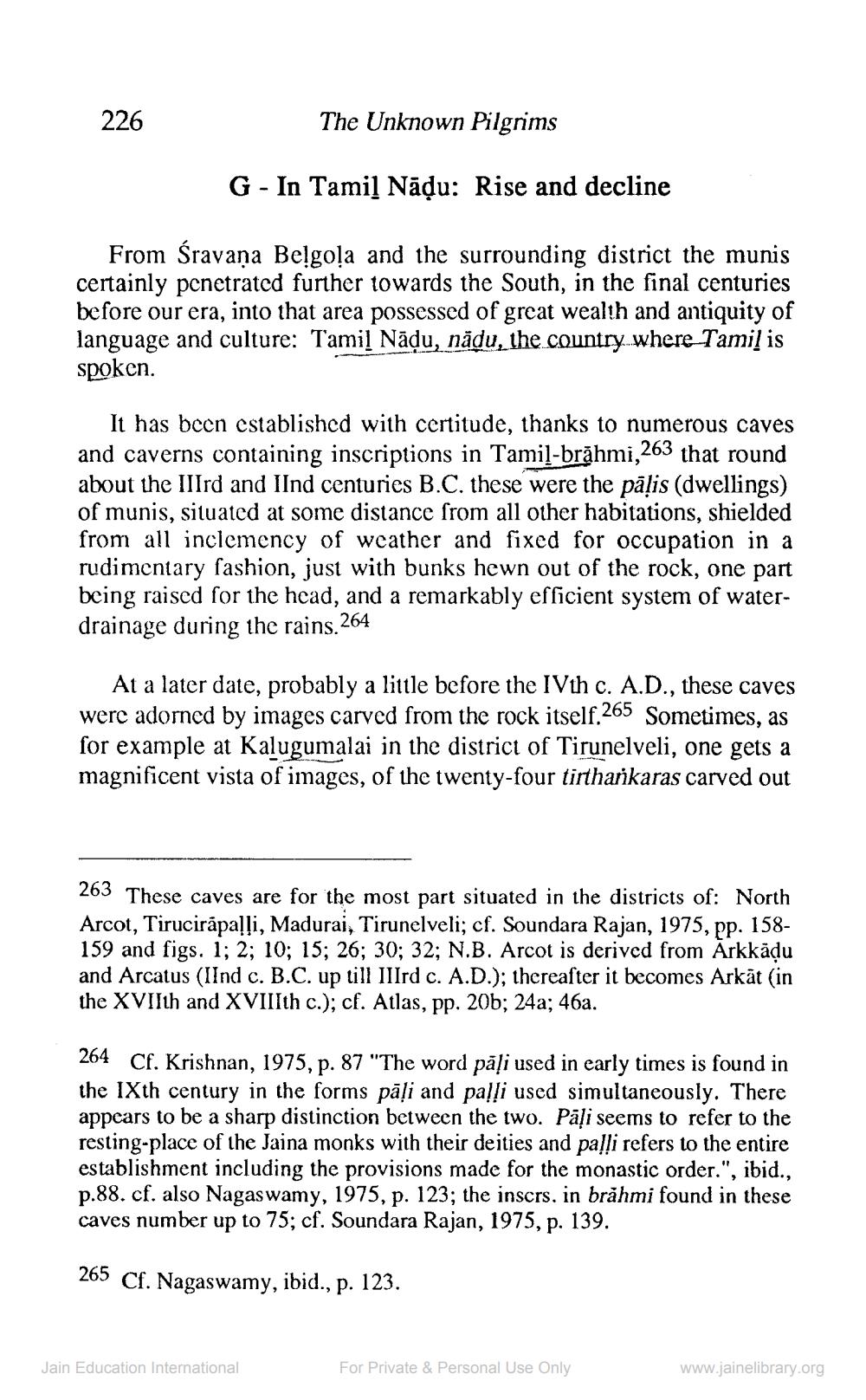________________
226
The Unknown Pilgrims
G - In Tamil Nāļu: Rise and decline
From Sravana Belgola and the surrounding district the munis certainly penetrated further towards the South, in the final centuries before our era, into that area possessed of great wealth and antiquity of language and culture: Tamil Nādu, nādu, the country where Tamil is spoken.
It has been established with certitude, thanks to numerous caves and caverns containing inscriptions in Tamil-brāhmi,263 that round about the IIIrd and IInd centuries B.C. these were the pāļis (dwellings) of munis, situated at some distance from all other habitations, shielded from all inclemency of weather and fixed for occupation in a rudimentary fashion, just with bunks hewn out of the rock, one part being raised for the head, and a remarkably efficient system of waterdrainage during the rains. 264
At a later date, probably a little before the IVth c. A.D., these caves were adorned by images carved from the rock itself.265 Sometimes, as for example at Kalugumalai in the district of Tirunelveli, one gets a magnificent vista of images, of the twenty-four tirtharikaras carved out
263 These caves are for the most part situated in the districts of: North Arcot, Tirucirapaļļi, Madurai, Tirunelveli; cf. Soundara Rajan, 1975, pp. 158159 and figs. 1; 2; 10; 15; 26; 30; 32; N.B. Arcot is derived from Arkkādu and Arcatus (IInd c. B.C. up till IIIrd c. A.D.); thereafter it becomes Arkāt (in the XVIIth and XVIIIth c.); cf. Atlas, pp. 20b; 24a; 46a.
264 Cf. Krishnan, 1975, p. 87 "The word pāļi used in early times is found in the IXth century in the forms pāļi and palsi used simultaneously. There appears to be a sharp distinction between the two. Pāļi seems to refer to the resting-place of the Jaina monks with their deities and palli refers to the entire establishment including the provisions made for the monastic order.", ibid., p.88. cf. also Nagaswamy, 1975, p. 123; the inscrs. in brāhmi found in these caves number up to 75; cf. Soundara Rajan, 1975, p. 139.
265 Cf. Nagaswamy, ibid., p. 123.
Jain Education International
For Private & Personal Use Only
www.jainelibrary.org




